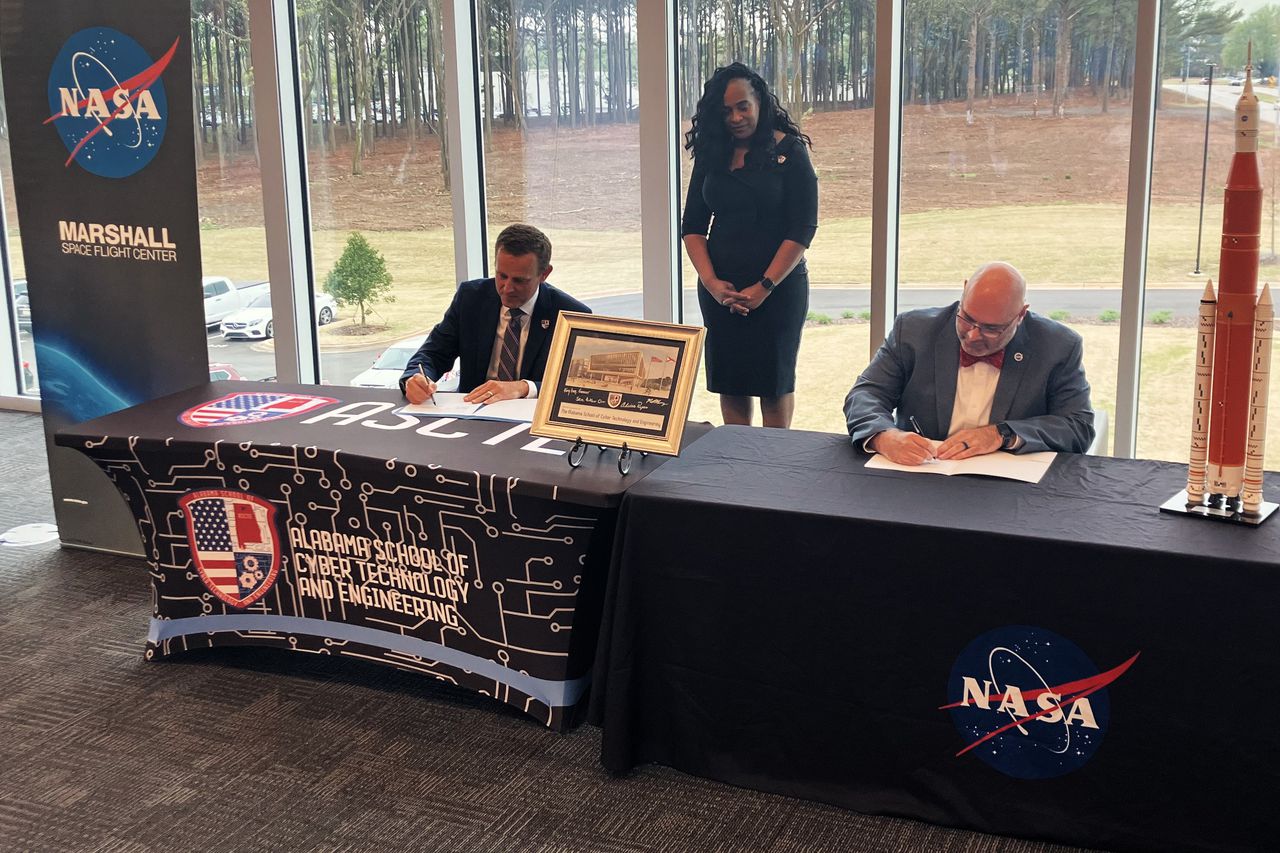NASA knows now who will ride Alabama-built Artemis II, ‘feels confident’ in ride
Hearing the names and seeing the faces of the first astronauts who will ride to the moon on a rocket you built “definitely creates a connection,” NASA Marshall Space Flight Deputy Director Joseph Pelfrey said Tuesday in Huntsville.
“We knew it was going to be a human-rated vehicle,” Pelfrey said. “We knew we were going to put astronauts on our vehicle at some point and, based on the success of Artemis 1, we feel very confident this rocket’s ready to fly humans.”
Pelfrey talked to reporters after NASA announced Monday the crew that will fly first aboard the rocket designed and built at the Marshall center. He spoke after signing a new cooperation agreement between the NASA center with the Alabama School of Cyber Technology & Engineering. That agreements gives the school, which identifies itself as the only American high school focused on engineering and cyber technology, access to NASA facilities, research programs and internships for its students.
NASA announced Monday that its astronauts Christina Koch, Victor Glover, Reid Wiseman and Canadian Space Agency Astronaut Jeremy Hansen will fly the Artemis II mission around the moon now scheduled Nov. 4, 2024. “For us, it puts (names) to the mission,” Pelfrey said Tuesday, “but it doesn’t change our dedication to safety and we feel like we’re ready to fly.”
Mike Sarafin, Artemis mission director, had similar words after the successful uncrewed flight, “The first launch of the Space Launch System rocket was simply eye-watering….,” Serafin said after the flight. “The rocket’s systems performed as designed and as expected in every case.”
Pelfrey advised the assembled students to be open to any opportunity that comes their way. “My advice (to students) would be don’t close any door that opens,” he said. “You may learn something you had no idea you would be able to learn, so take every opportunity that comes in front of you even if it sounds uncomfortable.”
The state cyber technology school is modeled on similar residential, public magnet schools for the fine arts in Birmingham and math and science in Mobile. It opened in Cummings Research Park during the COVID pandemic with “only 68 students,” school President Matt Massey said. The second year’s enrollment was 156 and this year’s enrollment is 255 students “from 61 Alabama counties,” Massey said.
Students at the school learn about emerging fields like cybersecurity in their classes and laboratories and from companies in Cummings Research Park, where the school is located. In their final year, those students do full-time internships with the research park’s technology businesses. This year’s “entire senior class is now interning with Raytheon Technologies,” Massey said.
